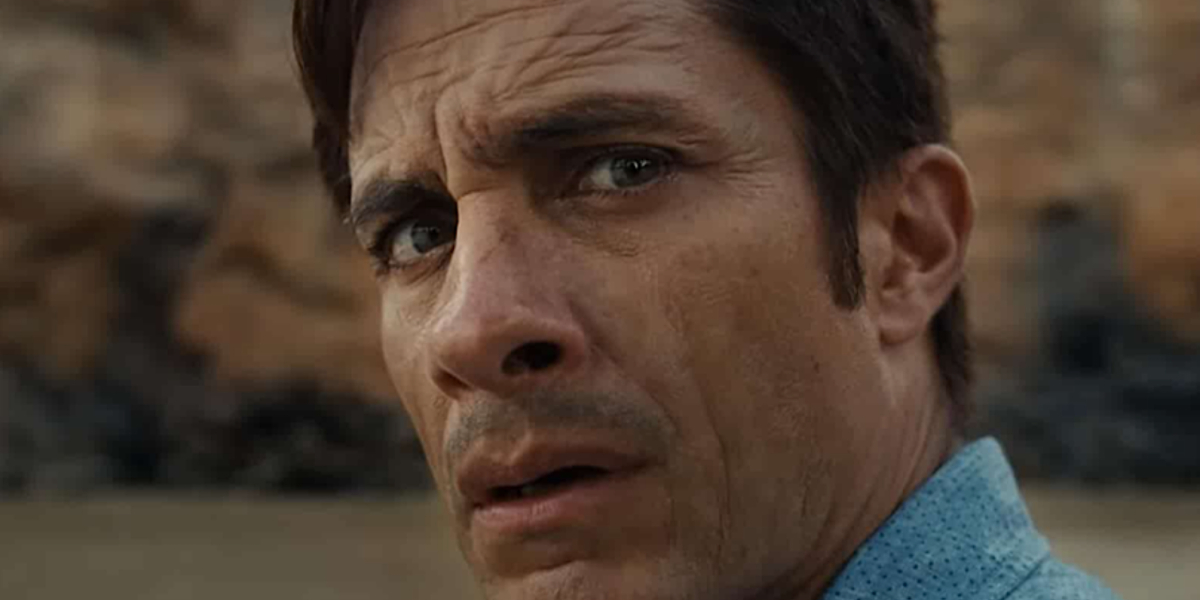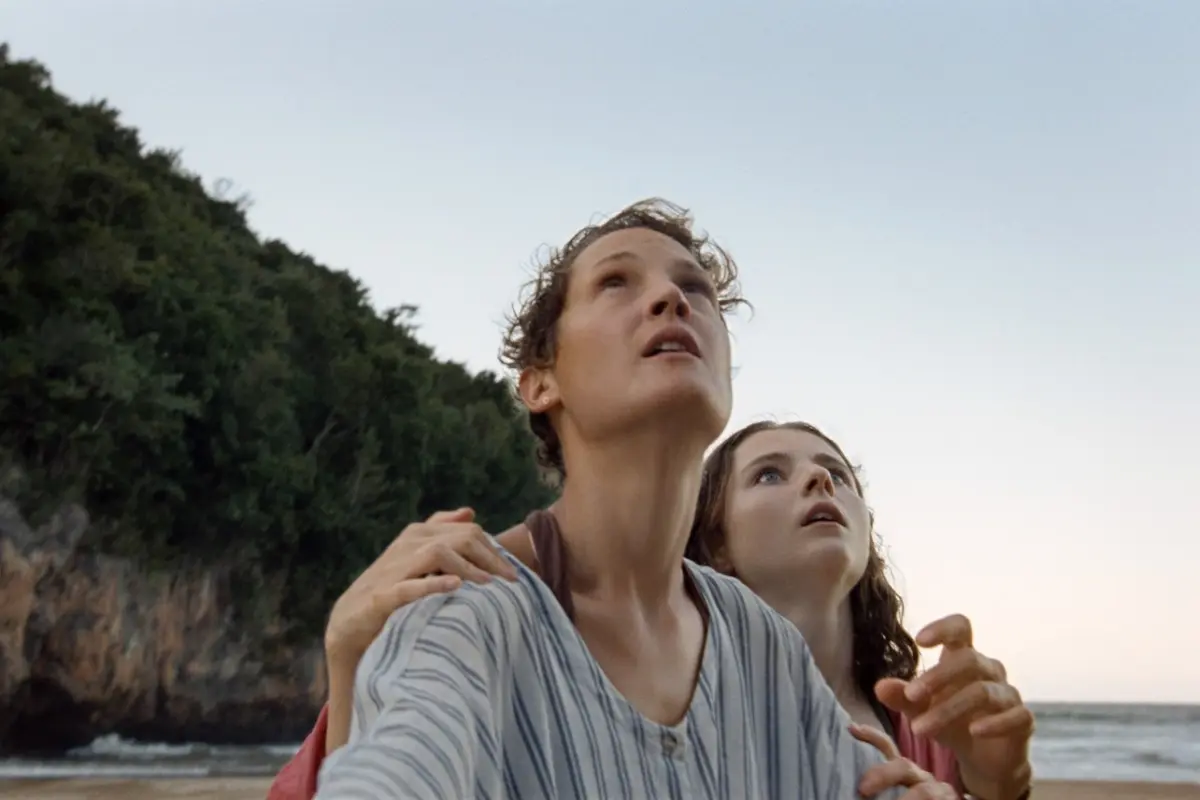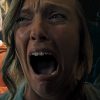M. Night Shyamalan’s Old is a chilling exploration of aging, mortality, and the human experience, set against the backdrop of a seemingly idyllic tropical beach. The film transforms a relaxing vacation into a horrifying existential ordeal, forcing its characters and the audience to confront the inevitability of time. Shyamalan, known for his signature twists, takes the concept of rapid aging and builds a narrative that is both unnerving and emotionally resonant. Even without the twist, the film’s unique portrayal of accelerated aging and human vulnerability is enough to unsettle viewers.
The story follows a group of vacationers invited to a secluded beach by a luxurious resort. Initially, it seems like an ordinary day of leisure, but they soon notice disturbing phenomena: children age visibly within minutes, and anyone venturing into the rocks blackouts and returns to the beach with no memory of the lapse. The group quickly realizes the beach accelerates the aging process at an extraordinary rate, aging roughly one year every thirty minutes. Attempts to escape prove futile, leaving the vacationers trapped, rapidly deteriorating, and increasingly vulnerable.
As the narrative progresses, three central mysteries emerge: why the beach accelerates aging, why leaving the beach triggers blackouts, and why these particular individuals were brought there. The first two mysteries are revealed gradually. The beach affects living cells, causing instant healing and rapid degeneration, while dead cells, like hair and nails, remain unchanged. Blackouts are induced by strong magnetic forces near the rocks, mimicking the physiological effects of pressure changes and disorientation. These rules create intense body horror sequences, notably Chrystal’s gruesome death caused by untreated hypocalcemia.

Trent Deciphers Coral Clues, Revealing Beach Experiment and Human Nature Observations
The third mystery of why the vacationers were selected becomes clearer as the story unfolds. Early in the film, Trent, a child on vacation, plays a decoding game with his friend Idlib, who teaches him a secret language. Later, Trent and Maddox discover clues in Idlib’s messages referencing coral, which turns out to shield against the magnetic forces that cause blackouts. This discovery becomes critical as they attempt a daring escape. The coral, initially a minor detail, becomes the key to survival, illustrating Shyamalan’s skill in embedding narrative hints that pay off dramatically in the climax.
The secluded beach is revealed to be a controlled environment orchestrated by Warren & Warren, a pharmaceutical company conducting accelerated clinical trials. The resort lures guests under the guise of a vacation, selecting individuals with pre-existing medical conditions Prisca with an ovarian tumor, Charles with schizophrenia, Chrystal with hypocalcemia, Patricia with epilepsy, and others. Guests unknowingly consume experimental drugs, and the accelerated aging allows the company to observe the long-term effects of treatments in mere hours, effectively turning the beach into a sinister testing ground.
While some participants are direct subjects of the trials, others are included to observe human behavior in extreme circumstances. The accelerated environment exposes the raw realities of growth, aging, and interpersonal dynamics. Adolescents experience puberty in hours, physical disabilities progress rapidly, and the psychological consequences of rapid aging unfold. Shyamalan uses these sequences to explore the human condition, illustrating both the fragility and resilience of people when confronted with their own mortality.

Trent and Maddox Expose Resort’s Secrets, Highlighting Mortality, Time, and Human Resilience
Trent and Maddox manage to escape after deciphering the coral clues, bringing evidence of the resort’s deadly activities. They present a journal documenting prior victims to a police officer at the resort, revealing a trail of missing persons. This evidence leads to the arrest of the resort staff and exposes Warren & Warren’s unethical experiments. The escape provides narrative closure, highlighting the resilience of the human spirit even in the face of time manipulated as a weapon.
Old concludes on a somber, reflective note rather than a conventionally satisfying resolution. The film emphasizes the inexorable passage of time, mortality, and the emotional connections that define human life. A key moment shows Trent and Maddox building a sandcastle, fully grown yet mentally still children, symbolizing the fleeting nature of life and the innocence lost to time. Shyamalan’s ending is less about triumph over evil and more about meditating on mortality, the human desire to control life, and the inevitability of aging.
Ultimately, Old is an exploration of human nature under extreme conditions. While the pharmaceutical company serves as the antagonist, the real tension arises from the existential struggle with time and mortality. The film underscores the importance of family, love, and shared moments amidst life’s brevity. By juxtaposing horror with emotional depth, Shyamalan delivers a narrative that is both terrifying and profoundly human, leaving audiences to ponder their own relationship with time and the people they cherish.



